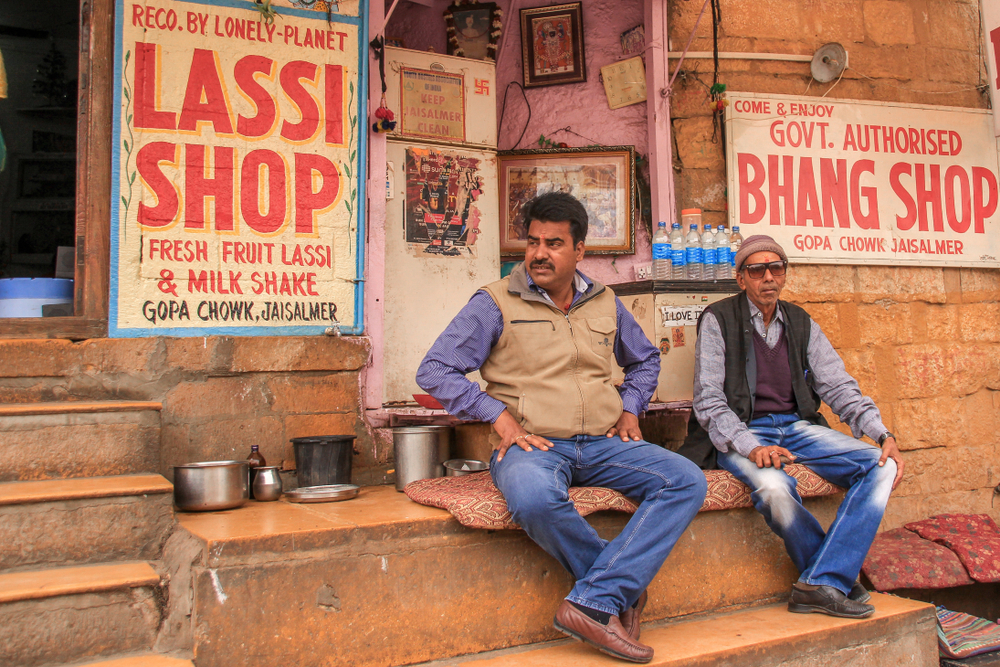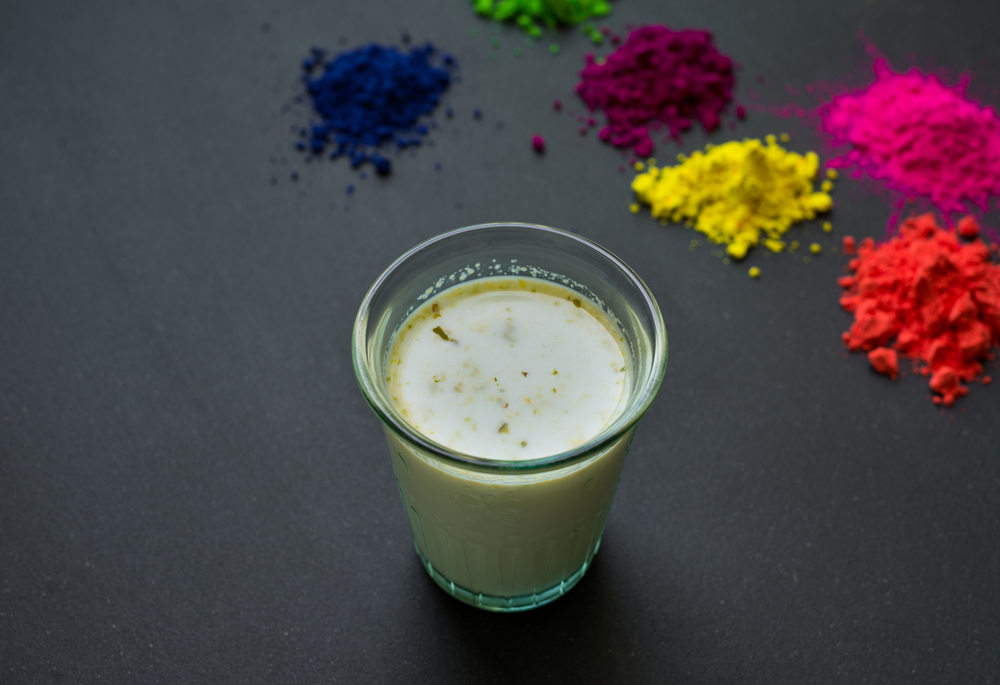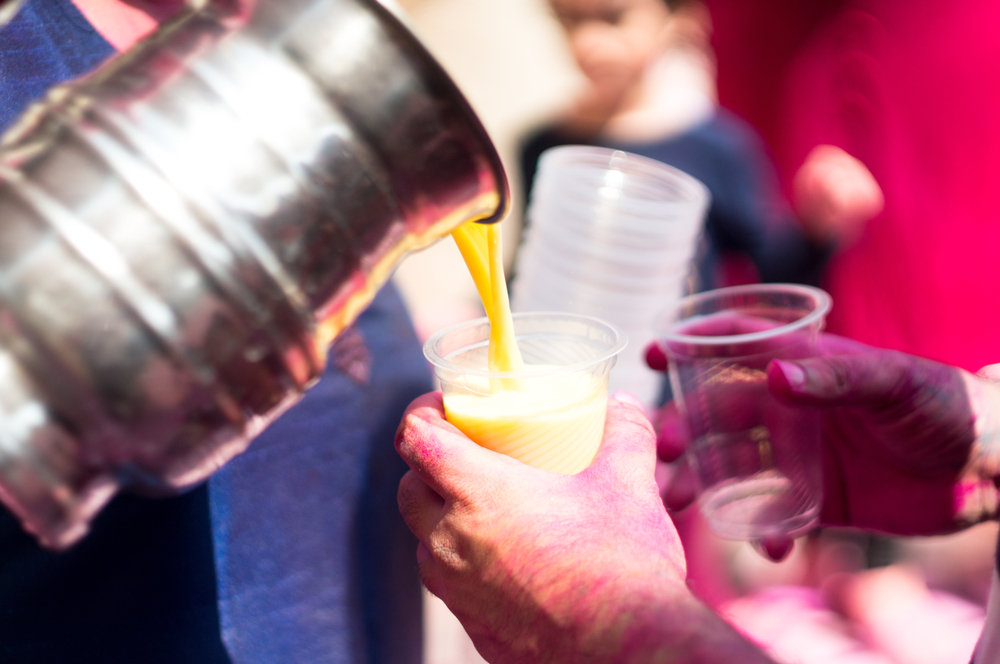The cannabis plant itself has spawned many different and exciting products, from cannabis-infused edibles and drinks, such as Bhang, to cannabis concentrates and topically applied oils.
As popular as these alternative products are, there is one, in particular, that most cannabis enthusiasts probably aren’t aware of. Originating from India, a local marijuana-infused beverage called Bhang has its roots deeply entrenched in ceremonial and religious purposes.
Most notably, Bhang is a popular Indian festival beverage consumed by thousands of people who participate in the Hindu Holi, Janmashtami, and Maha Shrivrati festivals.
If this is your first time hearing about Bhang, then you’re not alone. While the drink is a common sight to see in India, it is far less prevalent in the western world. If you’re interested in learning a bit more about this exotic cannabis-infused beverage, then keep on reading.
We’ll be taking a more in-depth look into the history, effects, and usage of Bhang, as well as a simple recipe for how to make it at home.
Without any further delay, let’s jump right in!
What is Bhang? Can You Smoke It?
Bhang, also known as Bhang Lassi, is a cannabis-infused beverage traditionally enjoyed during festivals in India. Bhang is typically made using the leaves and flowers of a female cannabis plant and has been used as a form of Ayurvedic medicine for generations.
Historically, many people in India have used Bhang to help achieve spiritual awakenings and ritualistic or ceremonial purposes pertaining to religious practices.
Despite cannabis being illegal in India, Bhang is a well-known derivative of the plant that is socially acceptable.
The History Of Bhang

Bhang is a historic beverage that has had religious ties with the Indian people for several generations. In fact, the cannabis plant’s roots originated from the Central Asian region. Historically, it has been used for various purposes, including spiritual, therapeutic, and medicinal occasions.
That said, Bhang is a beverage that is integral to Indian culture and religion. For India’s people, Bhang is seen as a gift from God, helping people achieve feats of spiritual enlightenment and introspection.
According to legend, the third God of the Hindu triumvirate, also known as Lord Shiva or the Lord of Bhang, had used the drink to turn within to develop and achieve mastery within himself. As a result, Shiva had descended from the Kush mountains to bestow upon humanity Bhang, a gift from the gods.
Traditionally, Bhang is created using milk, water, spices, and the leaves and flowers of a female Cannabis Sativa plant. Though the prohibition against marijuana has banned the use of the plant in several regions, Bhang can be found and purchased at many government-sanctioned stores in religious areas.
The Benefits Of Bhang
Much like many other cannabis-infused edibles and beverages, Bhang is also a derivative of cannabis and is known to contain many similar benefits.
Some of the most common benefits Bhang is able to provide include:
Potential Cancer-Fighting Properties
According to a study published in 2019, it was found that the cannabinoids in cannabis may have cancer-fighting properties that may help to reduce the spread of cancer cells.
Since Bhang is made up of the leaves and flowers of the cannabis plant, it is loaded with cannabinoids and terpenes, providing the same benefits as edibles.
Assistance With Sleep Disorders

Cannabis is known to help people who have insomnia or other sleep-related disorders.
According to a 2017 study, cannabis may be able to help reduce sleep disturbances and muscle spasms during sleep.
Anti-Inflammatory Properties
Through animal studies and research, cannabinoids and the compounds native to cannabis have been shown to help reduce inflammation.
Since a Bhang is made of cannabis, consuming it may also help to reduce inflammation and pain.
The Ability Stimulate Appetite
Certain strains of cannabis have also been proven to increase hunger, especially in those who are struggling to consume food.
Many people who have undergone chemotherapy rely on natural medications like cannabis to help them maintain a healthy calorie intake.
It Can Help Reduce Nausea & Vomiting
There is some evidence to support that THC, one of the primary components of Bhang, can help treat nausea.
Primarily, most of this research has been conducted with individuals undergoing chemotherapy treatments. In a review of 23 randomized controlled trials, people being treated with chemotherapy were given either cannabis-based products, conventional anti-nausea drugs, or a placebo.
Those receiving the cannabis-based products were nearly three times less likely to experience nausea and vomiting than those given the placebo. Additionally, these products appeared to be just as effective as the conventional anti-nausea medications.
How to Make Bhang

Now that we’ve discussed the history and potential benefits of Bhang let’s get to the fun part – learning how to make it!
Here’s What You’ll Need:
- 2 cups of water
- A pot
- A muslin cloth or strainer
- Mortar and pestle
- 3 cups of milk
- Around 1/2 an ounce (14 grams) of fresh cannabis
- 1/4 tsp garam masala
- 1/4 tsp ground ginger
- 1/4 tsp ground fennel
- 1/2 tsp ground anise
- 1/2 tsp ground cardamom
- 1/2 tsp rosewater
- 1/2 cup honey or sugar
- Additional Garnishing: leaves or chopped nuts
Step 1) Boil The Water And Cook The Pot
To start, fill your pot up with 2 cups of water and start boiling it. Once the water comes to a boil, remove it from the heat.
Then, add your cannabis to the pot. Let the cannabis steep for about 7 minutes before straining the plant material out with your muslin cloth or strainer.
Step 2) Grind the Leaves
Now that you’ve strained the leaves out of the pot, grab any leaves that may be holding excess water and moisture so that you can squeeze them and wring the water out. Then, put this water back into the pot.
Now, with your wrung out leaves, grab your mortar and pestle and begin grinding the strained leaves with 2 teaspoons of hot milk.
For this, slow and controlled movements will ensure everything is combined correctly and that the leaves absorb the milk as much as possible.
Step 3) Collect the Infused Milk
After your first attempt at grinding the cannabis leaves with the milk, you should notice that the leaves have absorbed the milk.
Once that seems to be the case, wring out the leaves once again to extract the infused milk.
You’ll want to store the infused milk in a separate container and repeat this entire process until you have about half of a cup of infused milk.
Step 4) Garnishing

To top things off, if you have any extra ingredients or garnishings you would like to add to your Bhang, you may pulverize them with a small amount of heated milk with your mortar and pestle.
Grind the ingredients enough to form a fine paste that can easily be mixed into the Bhang.
Step 5) Combine the Ingredients
Once your Bhang and your garnishings have been completed, combine them all together.
Once the ingredients have been combined, chill well and serve.
Not with a Fizzle, but with a Bhang
Bhang is a drink native to India. It has a rich history with the festivities and religions of that region and has been shown to provide a number of benefits that may help with health and spirituality.
Although the process of making Bhang is usually very involved and laborious, the final result is a delicious drink loaded with proteins and vitamins.
Bhang is an excellent ingestion method for users looking to steer clear of the potential dangers of smoking weed and instead opt for a soothing, more relaxing option to enjoy their cannabis.
So, if you have the time to spare and would like to try a fun DIY weed recipe at home, we would say go for it and have fun experimenting with different additions and garnishes.
Enjoy!

